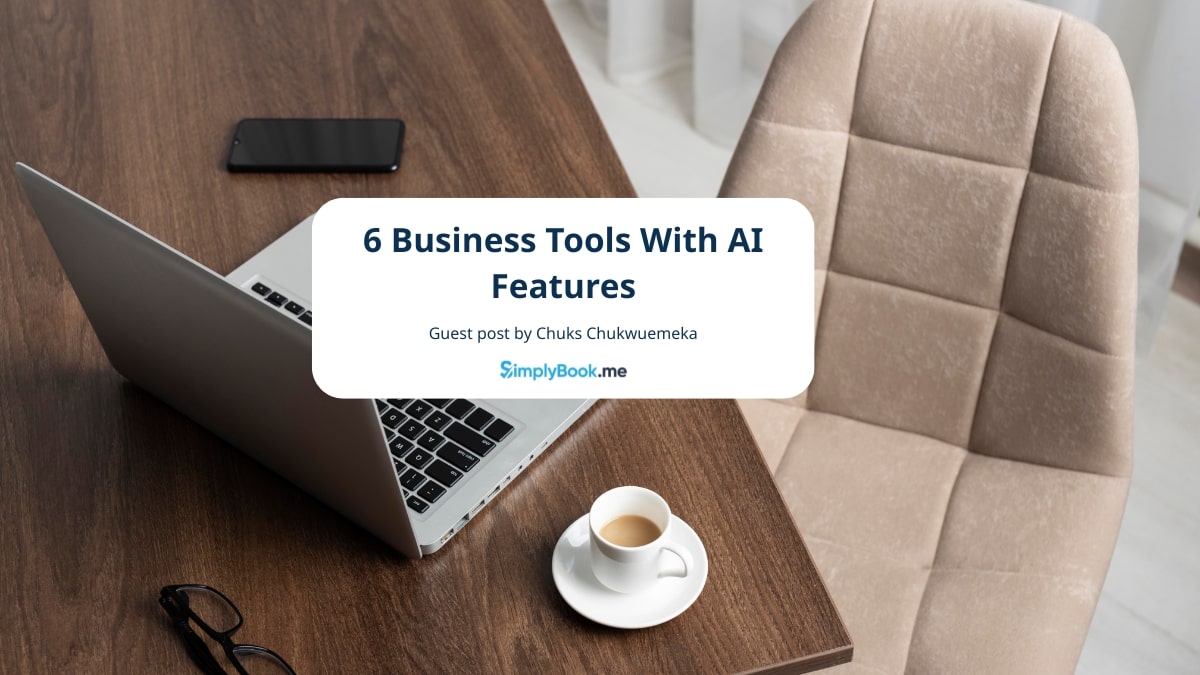Client Retention and Loyalty Guide

This post is also available in:
![]()
![]()
![]()
![]()
You might wonder why you need to pay so much attention to client loyalty and retention for your business. The simple reason is that loyal customers keep coming back to you, recommending you to others, or acting as a brand advocate long after their need for your services has ended. When you get a little more complex about it, you have to understand that there is a vast chasm between a new client and a loyal one. What turns a one-off client into a reliable, returning, and advocating one? That is the grey area where your retention actions will bear fruit.
Retention vs Loyalty – What’s the Difference?
“Repeat business or behaviour can be bribed. Loyalty has to be earned.”
Janet Robinson
I think Janet Robinson sums up the difference perfectly. Retention is how your actions affect the purchasing behaviour of your clients. If you don’t offer a great deal, will the clients come back? If you always need a gimmick, deal or discount to lure customers back, they are not loyal, but they could still get there. Track your email marketing and see when you get repeat customers; you should see whether they coincide with any promotions.
Loyal customers will come back, recommend you to others, and give positive reviews whether you’re offering promotions or not. Your loyal customers know your worth.
Are You Retaining Customers or Are They Loyal?
You probably won’t know this until you stop and think about your marketing strategy. Many service businesses are only working at a fraction of their total capacity right now, if at all. However, when you get a green light to reopen fully, with all services available, will you start with a promotion, or will you message your client list to tell them about it first?
It’s a tough call because everyone in your industry will want to attract the maximum clients they can to make up for the last year’s hellish business dip. If you message your client list and tell them of your reopening, your loyal clients will be the first to book an appointment with you without a promotion. Should you then follow that up with an advertisement for returning clients, you will get the retention clients. They aren’t loyal, and they’ll consider the alternatives.
Some returning clients will become loyal, but you can’t create a loyal client without first retaining them.
“You don’t earn loyalty in a day. You earn loyalty day-by-day.”
Jeffrey Gitomer
Client Retention – Keeping New Clients
So new clients are coming in, how do you intend to keep them coming back? There are several tried and tested methods for getting clients to come back, but they almost always require some effort from you. There are a few key things to remember about client retention. When you offer incentives to return to your business, you need to balance what you provide against your potential gains. If your deals are costing you more than what your clients bring in, it’s a bad strategy. You also need to remember that you will not win them all; some clients are destined never to return, and that’s fine. However, don’t waste too much money and effort on those who don’t want to return; they are not worth it to your business.
“If you have to convince someone you’re right for them, then maybe they aren’t right for you”
-Unknown
Here are 5 Customer Retention Strategies to help you keep your clients long enough to make them loyal clients:
Frequent Communication
If you are lucky enough to have either a mobile number or email address from a first time client, you can keep up your contact with them and maintain your business in their minds. Your first contact could be a request for feedback, and then you can follow up according to a schedule. One great way of automating your clients is to create a contact calendar. Client retention relies on keeping your business at the forefront of casual clients’ minds before choosing someone else.
Incentives
You knew we would get there, and it’s a sad fact that often client retention depends quite heavily on incentivising them to come back. No one is saying that your service isn’t top-notch, but you know some clients shop the offers until something catches their eye. In conjunction with your frequent communication, make sure you have a promotion ready for approximately the right time, i.e. when their next appointment is due. Ensure you have an incentive in their inbox before they start looking elsewhere.
Educate, Inform, Entertain & Inspire
Your frequent communications with your clients don’t always have to be promotional. Whether you send a monthly newsletter or have a regular blog posting schedule, you should add value to the service you provide with information that can educate, inspire, inform or entertain. Don’t make everything about self-promotion; your clients will get bored and ask you to stop, thus ceasing your contact with them. You don’t want that.
Overdeliver on Promises – Set and Exceed Expectations
You get to set the parameters and expectations of your clients. You set service quality expectations, delivery times, and every other parameter. When you set these parameters, you also get to exceed them whenever you can. If your clients are willing to do business with you on the terms you offer, they are more likely to be pleasantly surprised by you doing better.
Outstanding Service
Your key selling point will be the excellent service you provide. No matter the value you add, the incentives you offer, or the excellent deals you have running, clients will not return if your service is lacking – Fact! Make it an experience that your clients want to repeat.
Transitioning from “Returning” to “Loyal”
There is a transition period from a returning client to a loyal one. While they might not directly influence whether clients return, they could be the tipping point that pushes them into the loyal bracket. These are also customer retention techniques, but these will help you engage with your returning clients and bring them into your “family” of regular and loyal clients.
Leverage Client Surveys & Opinions
If you don’t already do regular and consistent surveys and feedback requests, it’s about time you did. Irrespective of industry, up to 92% of clients will look at reviews and ratings before making a definite decision. Even if they don’t read full reviews, they will check ratings. One example you can see is on Amazon; you can filter products by their star rating out of five and check the positive and negative feedback.
You can also gain significant trust and reliability by owning and responding to negative reviews. How you respond to negative feedback is an obvious indicator of your approach to your client care.
Build Trust With Transparency
A key component of engendering loyalty in your client base is trust. If your clients don’t trust you, they won’t do business with you. Did you know that some people think a company with 100% positive feedback is faking (or at least omitting) their reviews?
If your industry allows it and you are confident in your business, you can share wins, fails, and other outcomes with your clients. Be transparent in your dealings, and you will instil trust in your services and your business.
Surprise your clients
Potentially these people will become your loyal clients. If you feel like giving something to make them feel special, do it, add a little extra and make them feel like you appreciate them. It could be a goodie bag of samples for the service they just received or an invitation to a Christmas party. In small businesses, loyal clients become acquaintances and friends along the way. Let them know you appreciate them and the way they keep your business going.
Learn from complaints and praise
Praise is fantastic, and it’s wonderful to get that warm fuzzy feeling from getting a pat on the back telling you what you are doing right. However, that won’t make you stretch your business and create new services to accommodate your clients better. IT’s negative feedback that will make you better at what you do.
Unfortunately, negative feedback for personal services is rarely balanced and unemotional, so you also need to learn how to take a blow to your ego while learning from it.
The point is that you can respond to negativity with a positive change. However, by taking on the positive aspects of other clients, you know where you shouldn’t change things too much. Ideally, the majority of your feedback should be positive; if it isn’t, there is something very wrong, so you have plenty of people telling you what is right, but cherish those who will tell what could use improvement and treat it as a learning experience for you and your business.
Client Loyalty – Relationships, Respect & Rewards
Client loyalty can be both a fierce and fickle beast. Clients who have come to know and love your company will defend and recommend your services fiercely. However, loyalty is very susceptible to what it feels is a betrayal of that dedication. If you have a sudden (or even gradual) change to how your business treats clients, your loyal clientele will turn against you; you will have betrayed their loyalty.
Create a community
If you can do it, bring your clients together in one place where they can chat, talk about their experiences. Back in the beginnings of the internet, this was frequently achieved with forums. While forums still exist in some specific industries, many businesses have transitioned to Facebook and Slack groups dedicated to their customers.
Personalised Communication
Personalised communications make clients feel like a friend. Like they are being addressed personally instead of one of many in a bulk-mail shot. Personalisation is beneficial when it comes to targeting your marketing campaigns. When you send completely irrelevant offers to clients who have shown any interest in your deal, you tell clients that you don’t know them at all.
Engage on social media with dialogue
Let your clients know they can talk to you. Have a conversation about your business, your products and when they ask questions, answer them. Social media platforms are the perfect place to engage in neutral and positive conversations, not great for negativity and complaints.
Discussion with a person makes clients far more loyal to a company than to a corporate entity.
Reward loyalty and advocacy
This is a key component of keeping clients loyal. Address your loyal clients first when you decide to run a promotion. Give them the first bite of the cherry; they deserve your rewards first and foremost, over anyone else.
Several years ago, my internet service provider ran a promotion offering an annual subscription for half the existing customers’ usual price. Moreover, the offer was only valid for NEW customers. Can you imagine the backlash that occurred? Many customers ended up with the retentions teams being offered the same deal as the new customers, but their loyalty severely diminished.
This is a key example of expansion being counterproductive to retaining loyal customers, don’t do it unless you want to lose both clients and money.
When it comes to looking after client retention and expanding your client base, you really need to engage your loyal clients in the conversation. Reward your loyal advocates for their successful referrals – or even combine a deal for an existing client and a friend.
If your loyal clients aren’t yet at the advocacy point of their journey, you can always implement a loyalty scheme – it could even be an affiliate scheme for clients who no longer need your services.
Client Retention and Loyalty In Summary
In short, you can’t make a loyal client without first using a few client retention techniques. Your client retention rate is an easy calculation; it’s all about numbers. However, loyalty is rather more difficult to quantify and model.
With the right customer retention techniques and strategies, you can take your clients right from their first appointment to a loyal advocate. The bit in the middle is where the retention techniques work to create an environment your returning clients don’t want to give up.



Comments
5 comments